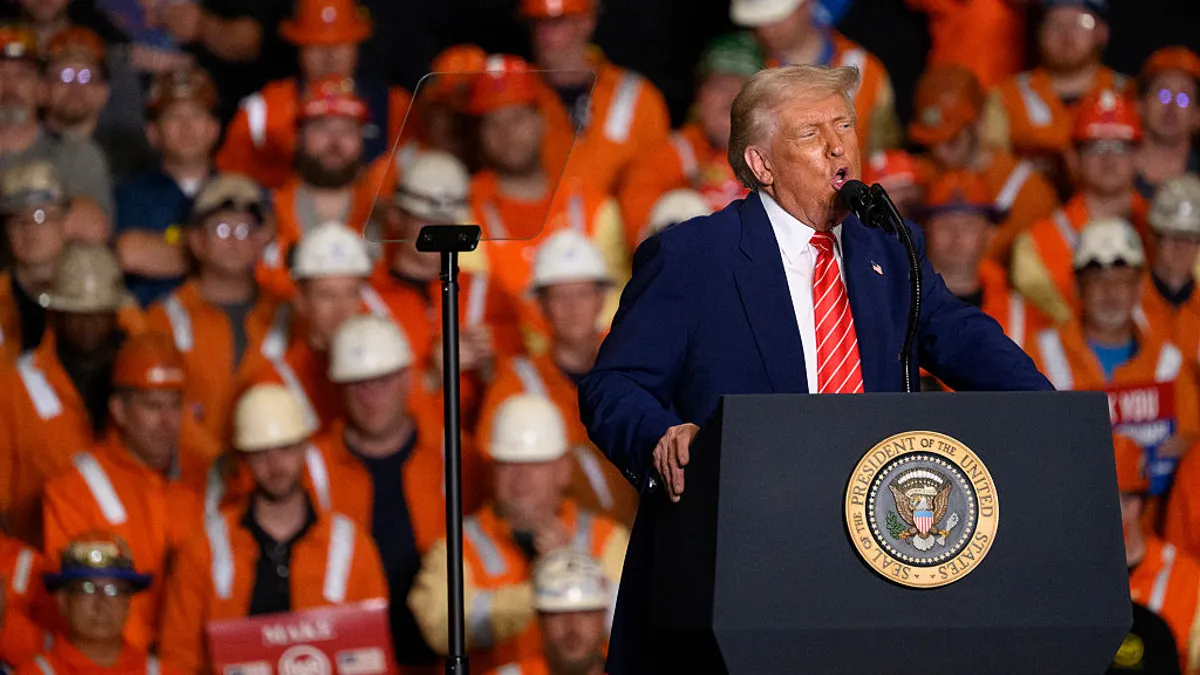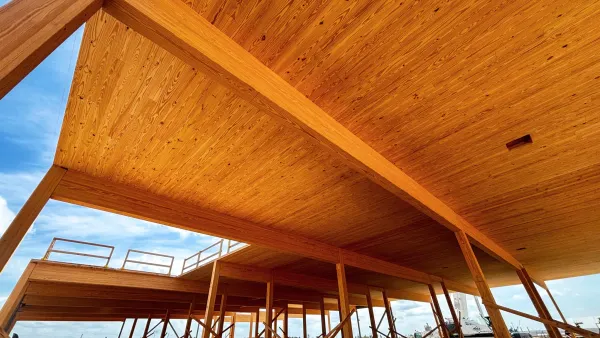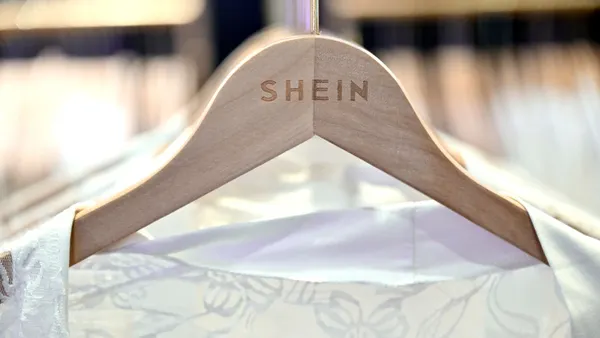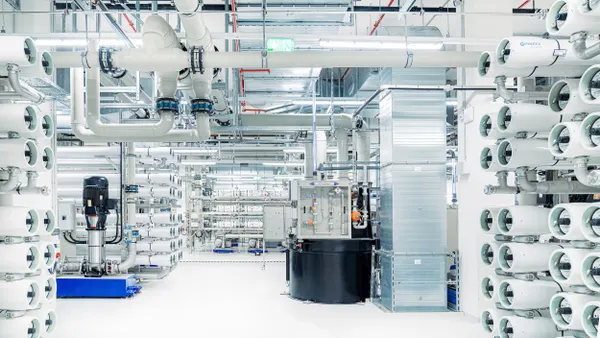Jamie Sychak, a third generation employee at a steel manufacturing plant in Pennsylvania called Butler Works, was looking forward to his facility decarbonizing with a federal grant awarded in March 2024.
The plant where Sychak has worked for 30 years was one of two owned by steel manufacturing giant Cleveland-Cliffs. Together, they were granted up to $575 million from the Department of Energy between facilities in Ohio and Pennsylvania to decarbonize production and push forward industry-wide plans for what environmental groups call “green steel,” or steel manufactured with lowered greenhouse gas emissions.
The most popular pathway for green steel involves electrifying the process with hydrogen created with renewable energy, also known as green hydrogen. The projects would reduce greenhouse gas emissions by an estimated one million tons annually by installing a hydrogen-ready blast furnace and two electric melting furnaces.
“Our workforce was incredibly happy to have this modernization of our facility,” said Sychak, who’s now president of United Automobile Workers Local 3303 after decades as a maintenance technician. “It’s a step into the future and it makes us more secure in our jobs.”
While President Donald Trump pushes for increased domestic steel production, including approval for the $14 billion acquisition of U.S. Steel by Japanese steelmaker Nippon in June, projects that could have reduced the industry’s reliance on coal for electricity and steel production are now in doubt. The Trump administration has moved to cut grants awarded during the Biden administration and the shifting regulatory environment has led companies to rethink their plans.
Cleveland-Cliffs, for example, previously touted its role as the first steel producer to conduct hydrogen trials in the Americas but recently said it no longer plans to pursue a hydrogen project at its Middletown, Ohio, location.
“Everyone seems to agree that we need to grow domestic manufacturing and we believe it’s here that those investments need to happen,” said Amanda Woodrum, co-director of Reimagine Appalachia, a coalition of nonprofits working to vitalize the region’s economy through greener industries. “Growing those domestic industries like Cleveland-Cliffs that are already local should be a priority. It would be a travesty if those investments get undone.”
Updating an old industry
While the industrial world has progressed on the promise of steel production, the building materials used in skyscrapers, cars, and windmills come at a price: steel is the single largest industrial emitter on the planet, accounting for about 10% of global carbon annually, when including indirect electricity emissions from production.
U.S. iron and steel demand is projected to rise 40% by 2050 percent, according to DOE. While the industry has moved toward adopting cleaner steel-making technology, emissions have continued to rise over the last decade. The global steel industry won’t reach net zero emissions by mid-century unless it goes through a serious overhaul, according to a 2024 Breakthrough Report by the International Energy Agency.
DOE’s Industrial Demonstrations Program, meant to decarbonize high-polluting industries, awarded $1.5 billion across six projects last year in an effort to mitigate steel’s environmental side effects. The bulk of that funding was awarded to Cleveland-Cliffs’ Butler Works in Butler County, Pennsylvania and Middletown Works in Butler County, Ohio, where Vice President J.D. Vance grew up.
Sychak’s Butler Works plant was granted $75 million for an induction reheat furnace, an all-electric furnace that could replace the natural gas forced-air furnaces the plant currently uses. Along with lowering, if not eliminating greenhouse gas emissions, the electric furnace would provide more uniform, controlled heat that would produce a better steel product, Sychak said. He said no jobs would be lost and the new heating process can increase the yield in the steel by 4%.
“We heard our grant was on the list for review, not necessarily to be cut,” Sychak said in late June, who sent a letter of support for the grant to the Trump administration. “I’m comfortable with no news being good news.”
Cleveland-Cliffs did not respond to a request for comment.
The company said during a May earnings call that part of its investments, including replacing a coal-fired blast furnace with a new unit running on hydrogen and natural gas at Middletown Works, could change “to better align with the administration’s energy priorities.” In a July 21 earnings call, CEO Lourenco Goncalves confirmed the company “informed the DOE that we would not be pursuing that project” because “we will not have availability of hydrogen.” He said discussions were ongoing with the agency about rethinking the project to use fossil fuels such as coal.
Meanwhile, the company announced in June that it had opened $150 million project at a Coshocton, Ohio, steel facility that replaces an acid-based system with a 100% hydrogen-based annealing line that can reduce emissions.
The company’s change at Middletown reflects an overall flatlining of green steel projects in the U.S. While announcements for new near-zero steel projects more than doubled between 2022 and 2023, according to the 2023 IEA report, those projects did not increase by 2024. While about 10 million metric tons of near-zero emission projects remained in the global pipeline, more than 100 million metric tons were needed by 2030 to stay on a net zero pathway, according to the 2024 report.
“There’s a lot of hurdles to go through to make green steel,” said Kathy Hipple, a research fellow who studies the advancement of green steel in Appalachia at the Ohio River Valley Institute, an economic research firm. “The cost of making green hydrogen is significantly higher than other forms of electricity so without a tax subsidy or incentive or some kind of support it’s going to be very difficult. Even if companies are willing to pay a premium for green steel, it still isn’t enough at the moment to justify the cost.”

Looking ahead
Appalachia’s Ohio River Valley has historically been the epicenter of the U.S. coal and steel industries. Green steel could boost production in the region, according to researchers, while lowering negative health impacts and high carbon emissions that have increased the frequency and severity of some natural disasters under climate change.
Pollution from steel production can lead to increases in particulate matter and ozone, both of which can cause shortness of breath, respiratory infections and worsen asthma conditions. Particulate matter can lodge in the bloodstream, decreasing lung function or causing premature death for people with heart or lung disease, according to the U.S. EPA.
Butler County, Ohio, where the Middletown plants are located, received an F grade for ozone and particulate matter in the air in the American Lung Associations 2025 State of the Air report. Butler County, Pennsylvania, where Butler Works is located, was not part of the 2025 analysis because data was not available.
In its 2024 sustainability report, Cleveland-Cliffs reported 15,499 metric tons of particulate matter emissions across all of its operations. The company stated that it had lower a GHG emissions intensity than the global average of integrated steel mills, and lower than the averages in Europe and China. Specific emissions for the U.S. were not included in the chart for comparison. The company has a long-term goal to reduce its GHG emissions to “near net zero” by 2050, with interim targets along the way.
Nippon Steel also has a goal to reach net zero carbon emissions by 2050. But its recent acquisition of U.S. Steel means those goals now have to align with the Trump administration's emphasis on fossil fuels. The transaction includes a “golden share” that gives the U.S. government more control over the future of the company, including the ability to appoint one independent director and grant the president or a designee consent rights over reductions in capital investments, and moving or closing facilities.
Prior to the sale, U.S. Steel was moving ahead with projects to lower or eliminate carbon emissions. A partnership between U.S. Steel, Molten Industries and CFPD Software aimed to build a pilot project to eliminate carbon emissions from iron production by using hydrogen.
“Some of the hopes for green steel adoption have dimmed under the Trump administration,” Hipple said, while noting other economic powerhouses like China and Europe haven’t stopped. “The world will move forward. Do you want to be focused on industries that will ultimately be part of the future or on industries that look backward?”











